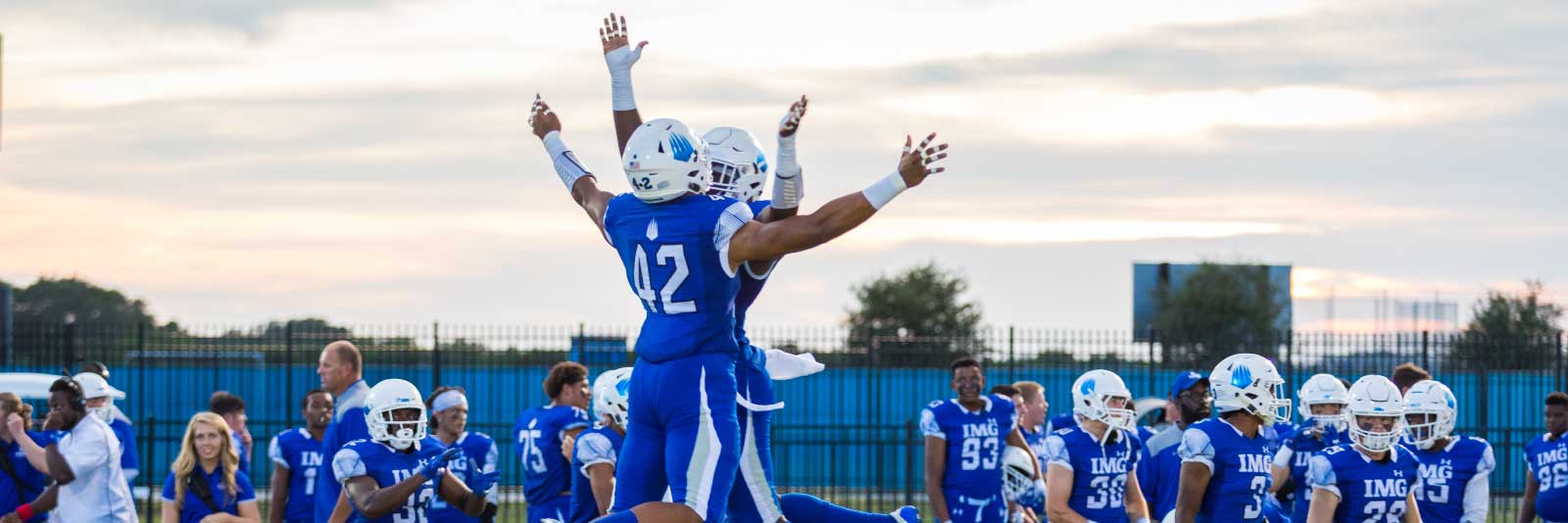List of College Football Teams

College-bound football players have a lot of college football teams to choose from—nearly 900, in fact. The trick: Figuring out what the right program is for your athlete. A good place to start is by understanding the differences between the division levels. This will help your family determine what kind of schools to target based on athletics, academics and what your athlete is looking for in a college experience.
Use this information to help you create your target list of schools. We always advise that student-athletes include a mix of schools in their list, as you never know which division level might be right for you athletically, academically and socially until you do your research. Every day, we hear from athletes who signed with a school they never would have thought of until they broadened their school search.
Quick Links
Lists of football colleges at each division level
We’ve compiled the full list of football colleges at each division level. Families can sort by conference, state and college name.
How many college football teams are there?
There are approximately 858 football colleges spanning five different division levels: NCAA Division 1, Division 2, Division 3, NAIA and NJCAA. We calculated which states have the most college football teams, and the numbers shook out like this: Pennsylvania (55), Ohio (40), Texas (49), New York (36), North Carolina (36), Massachusetts (27), Illinois (33), Minnesota (30), Virginia (38) and California (56).
How do you find college football teams looking for players?
There are a couple different ways to find college football coaches looking for players:
- Research football colleges’ rosters. Check out which teams have a large number of seniors leaving, as well as teams that don’t have a very deep bench in your athlete’s position. Then, contact coaches at those football colleges, sending them your recruiting profile and key recruiting information.
- Reach out to college coaches. Send them a link to your online recruiting profile, as well as your highlight video and few key stats. Ask if they are looking to recruit athletes in your position for your grad year.
- Use NCSA’s Roster Openings feature. College coaches with open roster spots will post a description of the type of athlete they are looking for.
Related Articles
- Learn everything you need to know about college football camps.
Is FCS the same as FBS?
Unique to football, D1 football colleges are split into one of two subdivisions: The Football Bowl Subdivision (originally called Division 1-A) and the Football Championship Subdivision (or Division 1-AA). FBS football is considered the most athletically competitive division in football, with FCS football colleges not far behind. The two subdivisions are, for the most part, pretty similar. They play against each other, and players are allowed transfer from one subdivision to the other without incurring the one-year eligibility penalty. However, there are four main differences to note:
- FBS teams can award a maximum of 85 scholarships, while FCS football colleges are permitted to give out 63 scholarships. Furthermore, FBS can only give out full-ride scholarships. FCS teams can split up their scholarship dollars however they want.
- The FBS regular season is 12 games plus the conference championship weekend, in contrast to the 11-game regular season for FCS.
- In post-season play, FBS teams compete in bowl games (hence the name: Football Bowl Subdivision). FCS college football teams’ postseason is a 24-team playoff, in which eight teams get byes into an NCAA college basketball-style Sweet 16.
- Overall, FBS college football teams have more money than FCS teams, due in part to their large broadcast deals. This means, FBS football colleges tend to have top-of-the-line facilities and more expensive coaching staff.
College football rankings. What are the best football colleges?
NCSA created a Power Rankings system that allows us to provide student-athletes with a comprehensive picture of their college options. This system ranks NCAA and NAIA schools that offer college football programs based on factors that we know play a large role in the student-athlete’s college search, including cost, academics, size, location and more.
View the top NCAA football programs across all divisions.
Related Articles
- How does the NCAA oversee college football signing day?
View the full list of colleges that offer football below.